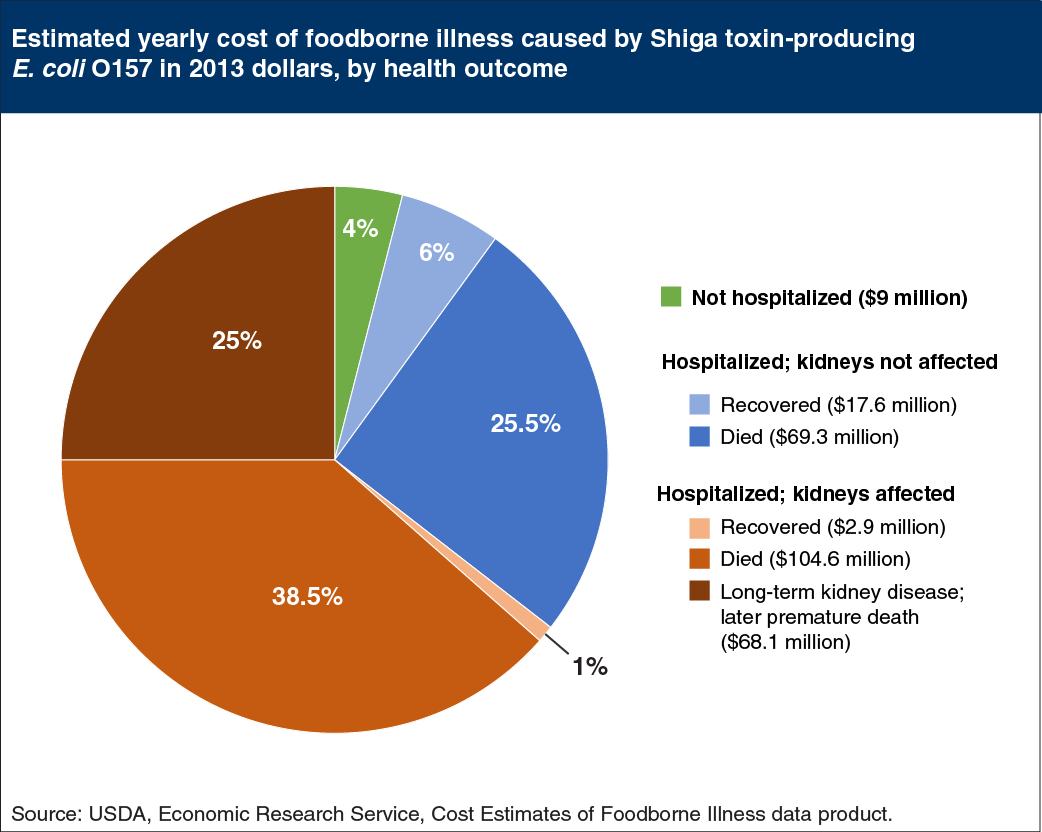Kidney damage responsible for 65 percent of illness costs from STEC O157
- by Sandra Hoffmann
- 12/3/2015

While most E. coli bacteria are relatively harmless, a small group of E. coli produce a Shiga toxin that can severely damage a person’s kidneys. The most well-known Shiga toxin-producing E. coli (STEC), STEC O157, causes less than 1 percent of U.S. foodborne illnesses with an identifiable pathogen cause and only 2 percent of the cost of these pathogens. Yet, because it is a major cause of outbreaks and because it can cause kidney damage, STEC O157 is often in the news. ERS estimates that the 63,000 illnesses caused by STEC O157 (formerly called E. coli O157) each year in the United States impose $271.4 million in economic burden. Most people (97 percent) sickened with STEC O157 recover without being hospitalized. In roughly 2,100 cases of STEC O157 illnesses, however, people are hospitalized; in 15 percent of these cases the kidneys are affected—sometimes resulting in death, ongoing dialysis, or a kidney transplant. Cases in which the kidneys are affected account for 64.5 percent of the economic burden from foodborne STEC O157. This chart is based on a chart in the ERS report, Economic Burden of Major Foodborne Illnesses Acquired in the United States, May 2015.

